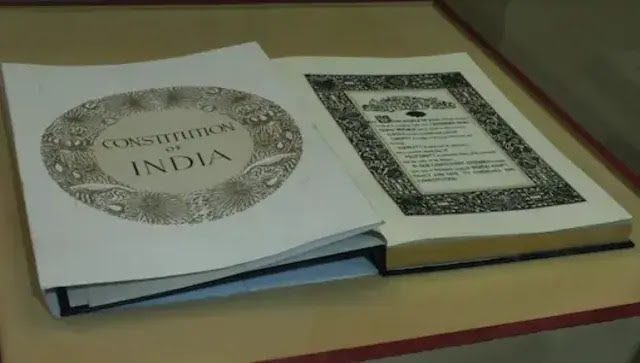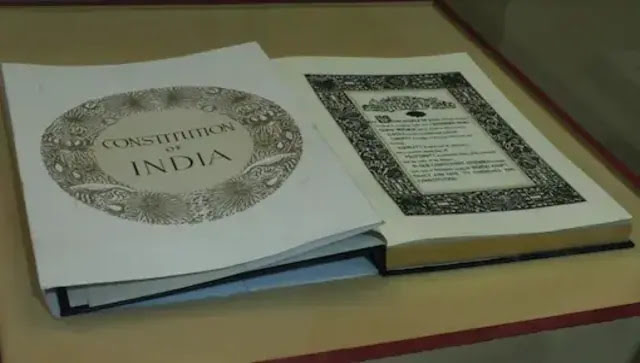This is the second part of the Constitution series. For part one – read.
Student: In our last discussion you said India@75 was also the right occasion to revisit the Constitution of India.
Teacher: Our Constitution has served, we might even say, saved, the republic. But that does not mean that we must consider it as something immutable, set in stone, beyond questioning or change.
Student: In fact, you had pointed out that the word “Socialist” and “Secular” were interpolated into the Preamble of our Constitution by Indira Gandhi during her infamous Emergency.
Teacher: If any part of the Constitution is to be considered sacrosanct and least liable to change it would be the Preamble. And yet, Mrs Gandhi, after practically suspending the Constitution, also made widespread changes to it.
Student: How was that possible?
Teacher: In 1976, during the heyday of the Emergency, Mrs Gandhi set up a committee chaired by the Minister of External Affairs, Swaran Singh. Its mandate was to “to study the question of amendment of the Constitution in the light of experience.”
Student: Whose experience?
Teacher: Certainly not the experience of “We the People,” it would appear. The 42nd Constitution Amendment Bill was introduced to the Parliament on September 1st, 1976 by then Minister of Law, Justice and Company Affairs, HR Gokhale. In addition to the Preamble itself, articles 31, 31C, 39, 55, 74, 77, 81, 82, 83, 100, 102, 103, 105, 118, 145, 150, 166, 170, 172, 189, 191, 192, 194, 208, 217, 225, 226, 227, 228, 311, 312, 330, 352, 353, 356, 357, 358, 359, 366, 368 and 371F and the Seventh Schedule were sought to be amended.
Student: This is incredible.
Teacher: The range of changes proposed were so extensive that some constitutional experts termed them a “mini Constitution.” Articles 103, 150, 192 and 226 were sought to be substituted and new parts IVA and XIVA, plus new articles 31D, 32A, 39A, 43A, 48A, 51A, 131A, 139A, 144A, 226A, 228A and 257A were inserted into the Constitution.
Student: Why aren’t we taught these things in our syllabus?
Teacher: I am afraid, at this rate, this is going to be your running refrain. Justifying this massive overhaul of the Constitution, Mrs Gandhi said the amendments were “responsive to the aspirations of the people, and reflects the realities of the present time and the future.”
Student: What she meant was not the “aspirations of the people”, but her will, perhaps. Did you say that was the 42nd amendment? How many more have there been?
Teacher: Our Constitution has been amended 105 times.
Student: So much for it being an immutable or sacrosanct!
Teacher: This does not mean that it should be amended at the drop of a hat; on the contrary, these amendments take us back to its original divided self…
Student: Or its design flaws?
Teacher: In many ways the Constituent Assembly debates are more interesting than the constitution itself. They show a range of opinions almost tantamount to a divided mindset.
Student: You mentioned last time how Dr Ambedkar took a deep, personal interest in some parts of the Constitution. Who else played an important role in shaping it.
Teacher: Without question, our first Prime Minister, Jawaharlal Nehru.
Student: In what way?
Teacher: He probably drafted several paragraphs and sections himself, and also tried to push some aspects of the Soviet Constitution into ours.
Student: Really? Such as?
Teacher: The Fundamental Duties under Article 51-A, for example. Also a Planning Commission constitutionally mandated, which later became the economy of command, control, and centralised 5-year plans.
Student: These things should be taught to us — we are kept in the dark. I protest.
Teacher: Nehru also put into the Constitution ideas of social, economic, and political justice, which Ambedkar also endorsed and incorporated in the Preamble.
Student: Which are the other countries that we borrowed from when it came to framing our own Constitution?
Teacher: The United States of America, where Ambedkar studied, was a major inspiration. He took the idea of the Preamble, Fundamental Rights, Federalism, the Electoral College for the election of the President, the separation of powers and the independence of the judiciary, equal protection under the law for all citizens, and the President of India as the Supreme Commander of Armed Forces, from the US.
Student: But the President of India is the Head of State only in name.
Teacher: Precisely. That’s one reason why some of our Prime Ministers have actually tried to function as Presidents, while no President of India, despite being Head of State, has ever stood up significantly against a Prime Minister.
Student: Do you think a presidential form of government would actually work better for India.
Teacher: I have no doubt that it would. The people of India, who are sovereign, should directly choose their Head of State who will lead them for five years instead of a political party which, in turn, chooses its leader, who automatically becomes our Prime Minister.
Student: Ah! Again a mismatch between our needs and the provisions of the Constitution. Another reason why a Prime Minister behaves like a President telling the voters to elect him, not necessarily the local leader or the party?
Teacher: And the resulting over-centralisation of power, which the prime ministerial form of government does not encourage. Remember the Prime Minister is only the first among equals, not the Head of State.
Student: Don’t you think that we have only begun to scratch the surface of what ails our Constitution and what we can do about it? Let’s take up a few more crucial issues next time, please.
Teacher: So be it.
[This is Part 2 of the Constitution series. To be continued>
The writer is an author, columnist and professor at Jawaharlal Nehru University. Views are personal.
Read all the Latest News , Trending News , Cricket News , Bollywood News , India News and Entertainment News here. Follow us on Facebook , Twitter and Instagram .


)




)
)
)
)
)
)
)
)